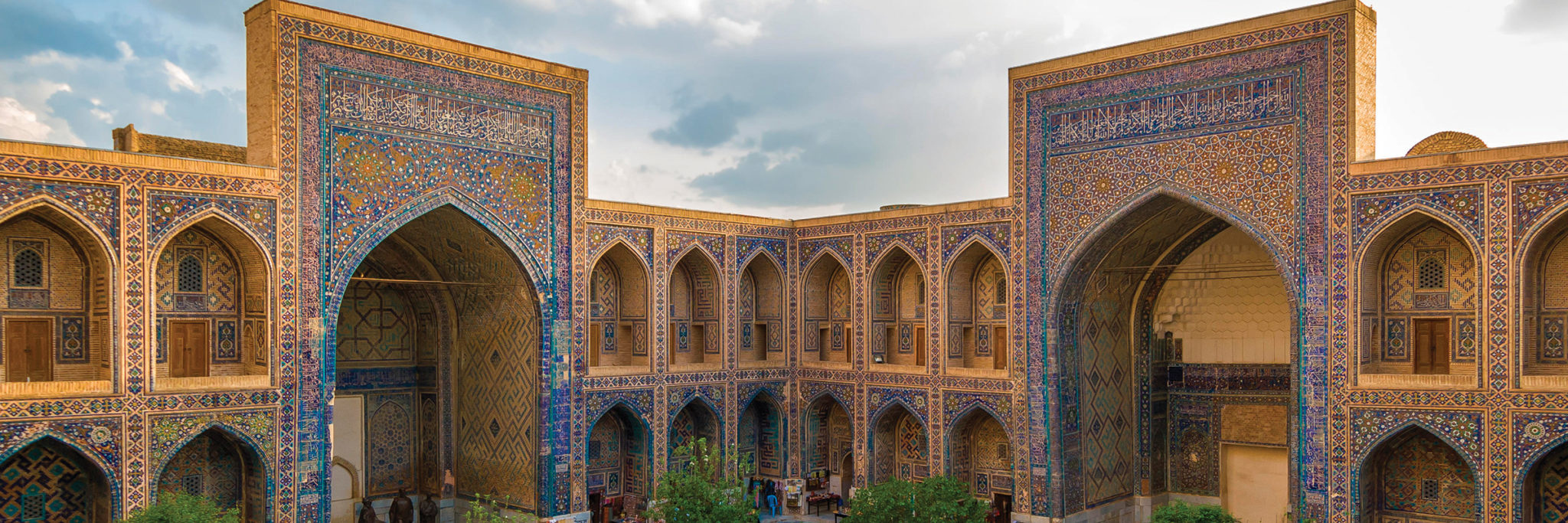Six thousand-plus miles from Granville, Ohio, the architecture of Samarkand, Uzbekistan, speaks as clearly as any tour guide. The colored domes, mosaics, and marble of this World Heritage site explain the history of its sovereigns like Alexander the Great, Genghis Khan, and Tamerlane. On the other side of the city, you find evidence of the rule of Russian czars and the Soviet Union with wide streets, parks, and public schools. The past 27 years of capitalism are also increasingly apparent with new hotels and restaurants.
“The landscape itself is telling you of the three histories and ideologies at work: Islam, socialism, and capitalism,” says Economics Professor Sohrab Behdad who, alongside Assistant Economics Professor Zarrina Juraqulova, took 11 students to Central Asia this summer as part of a Denison Seminar to unpack the intricacies of an ancient society under development.
As a part of “A Journey to Transoxiana,” this group spent three intensive days studying the region’s history before spending 18 days traveling in Tajikistan and Uzbekistan. “We wanted to deepen the history of this region beyond a textbook summary,” adds Juraqulova, a Tajikistan native.
As a part of this interpersonal work, students visited institutions such as Tajik National University and the U.S. Embassy in Tajikistan. There, they had conversations with locals to understand the divisions at play in Tajik culture, including, for instance, the Soviet Union’s legacy.
“Compared to places like Eastern Europe,” explains Juraqulova, “Central Asia had a good experience with the Soviet Union. For example, they increased the literacy rate, among other things, from four percent in 1929 to 99 percent by 1956. This surprises many Americans.”
“The transition from socialist to capitalist ideologies has been difficult for many,” adds Behdad. “Many young Tajik men travel to Russia as migrant workers, for instance, because there is little good work to be had here.”
It is this spirit of asking questions, listening, and appreciating the complexities of a society that Behdad and Juraqulova hope students took away from the course. “We want them to understand that society is complex. People are complex. Central Asia was a laboratory where we, as visitors, could see the stark complexity of human society. In doing so, not only do we understand the complexities of our own society in new ways, but we see that we are not all that different from those on the other side of the world.”

